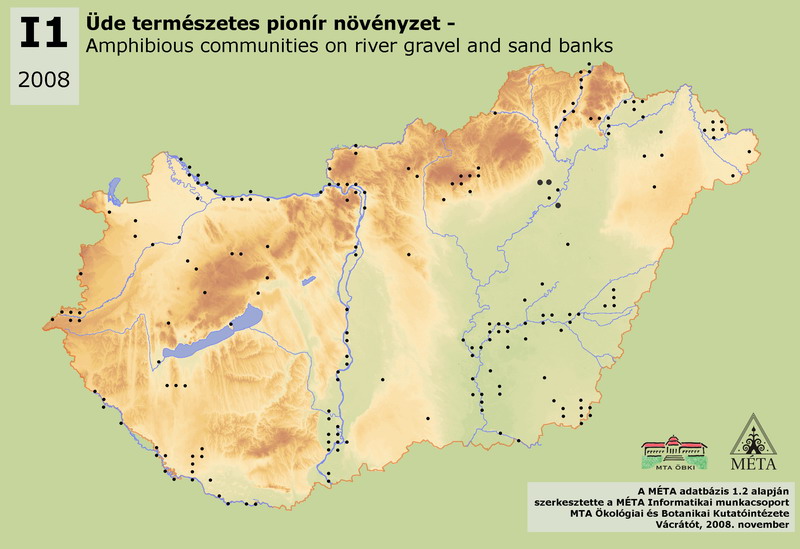MÉTA Program >>> Habitat distribution maps


I1 – Amphibious communities on river gravel and sand banks:
Pioneer, low, mainly annual vegetation of Nanocyperion species. It grows on bare surfaces along rivers and on floodplains, sometimes in marshes and waterlogged depressions. It can occur on rice fields and in wet years also on arable fields. The extension of the stands is often smaller then 1 m2. Their species are not ruderal, numerous nationally rare, protected and endangered species can be found on these sites (e.g. Astragalus contortuplicatus, Carex bohemica, Elatine spp., Lindernia procumbens). Other typical species are: Cyperus and Juncus species, Limosella aquatica, Eleocharis acicularis and E. ovata, Gnaphalium uliginosum, Heliotropium supinum, Schoenoplectus supinus or Verbena supina. The habitat is not consistently documented. Species rich parts of flooded arable fields were not mapped (by reason of the survey method and the dry summers). We documented altogether 200 ha, but this amount can multiply in wet years, while the community withdraws to the bank zone of the rivers in dry years. The stands can be documented only with detailed and focussed mapping in wet years.
Molnár, Zs., M. Biró, J. Bölöni & F. Horváth (2008): Distribution of the (semi-)natural habitats in Hungary I.: Marshes and grasslands, Acta Botanica Hungarica 50 (Suppl): 59-105. >>> letöltés (5,4 MB, PDF)
MÉTA Program,
MÉTA Fotótár
MÉTA Élőhely-Ismereti Útmutató (ÉIÚ),
MÉTA Adatlap-Kitöltési Útmutató (AL-KÚ)
(C) MÉTA Informatika, 2005-2009,
MTA Ökológiai és Botanikai Kutatóintézete